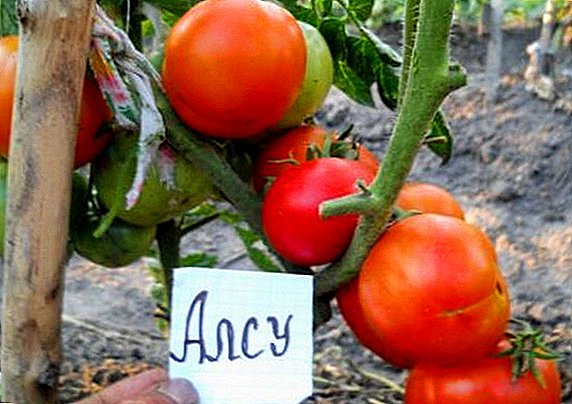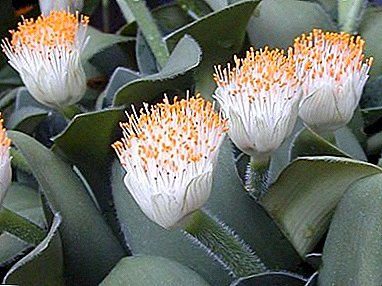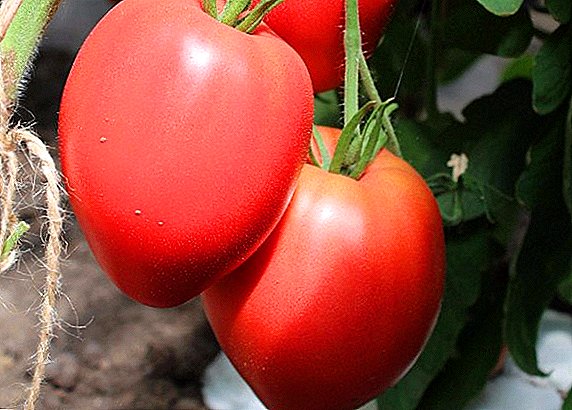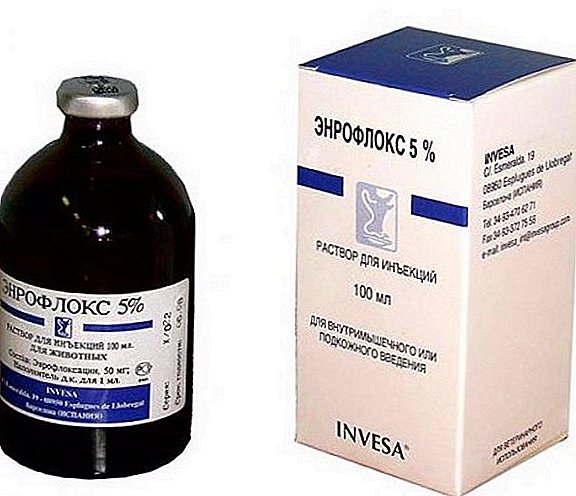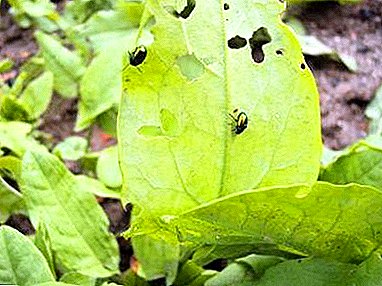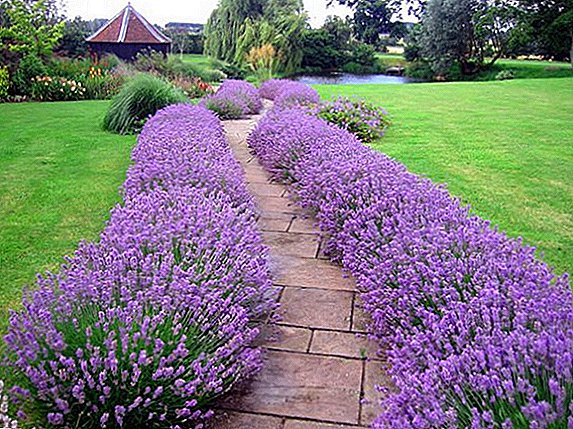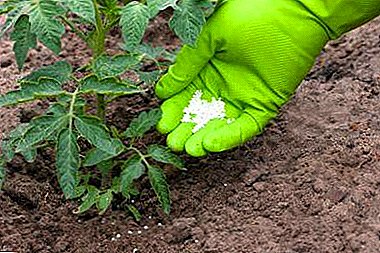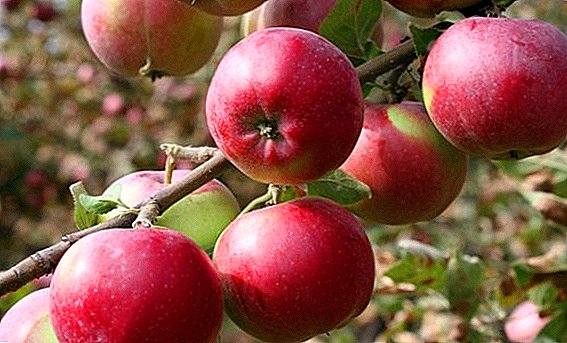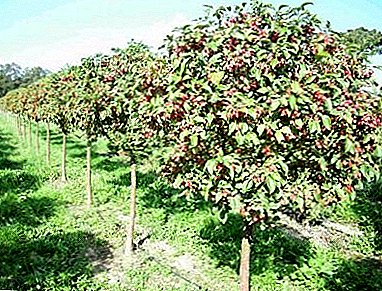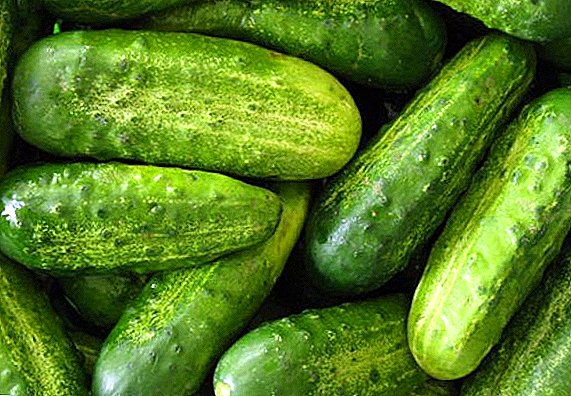 Many gardeners prefer to grow vegetables not in the garden, but in the greenhouse. One of the most common greenhouse crops are cucumbers, despite the fact that they are successfully grown on a common garden bed.
Many gardeners prefer to grow vegetables not in the garden, but in the greenhouse. One of the most common greenhouse crops are cucumbers, despite the fact that they are successfully grown on a common garden bed.
Often, polycarbonate greenhouses are used for planting greenhouse plants. They are especially convenient for weaving plants, in particular, cucumbers.
Normal or hybrid
Hybrid varieties will be excellent varieties of cucumbers for polycarbonate greenhouses. They have short whips. They do not pinch. To form bushes is not necessary.
Important! The seeds of hybrids purchased in the garden shop are already decontaminated and hardened.
Hybrids are practically not susceptible to diseases, they are not afraid of pests and difficult climatic and microclimatic conditions, they can easily adapt. Among them are plants for every taste - early, mid-early, late. In addition, they are high-yielding. Can be stored longer than normal, carry transportation easier.  The choice will also depend on the climatic conditions of cultivation. Despite the fact that the plant grows in the greenhouse, weather conditions still affect its development.
The choice will also depend on the climatic conditions of cultivation. Despite the fact that the plant grows in the greenhouse, weather conditions still affect its development.
Choosing a grade, you need to pay attention to its labeling. Often it is indicated by the letter F and the number. The figure indicates the generation of a hybrid. For example, F1 marking means that these are first-generation hybrids. You need to buy these, because they have excellent characteristics, higher rates, for example, than F2.  As for the best varieties of cucumbers for greenhouses made of polycarbonate: hybrid parthenocarpic and self-pollinating are excellent here.
As for the best varieties of cucumbers for greenhouses made of polycarbonate: hybrid parthenocarpic and self-pollinating are excellent here.
It should be noted that hybrids are not grown for propagation by seed.
Did you know? Homeland cucumber - tropical and subtropical regions of India, where it still grows wild.
So, we select hybrid varieties. The following factors will affect our choice:
- ripening time;
- collection term;
- climate;
- destination
The most productive varieties of cucumbers for greenhouses - F1 hybrids "Zozulya", "May", "Spring", "April", "Prepaid expense" and others. "Hybrid" and "Pace" disembark when you need to quickly get a harvest. If you grow greenhouse cucumbers all year round, you need to remember that for each season there are separate varieties. 
The best predecessors for cucumbers are: all kinds of cabbage, tomatoes, potatoes, dill, parsley, carrots, beets and rhubarb.
The relay race, Moscow Greenhouse F1, Blagovest, Relay F1, enjoy good reputation among winter-spring ones "Forward F1" and etc.  The best spring-summer is "Zozulya F1", "April F1", "Mirashka F1", "Herman F1", "F1 Director", "Arbat F1", "Vasilisa F1" and etc.
The best spring-summer is "Zozulya F1", "April F1", "Mirashka F1", "Herman F1", "F1 Director", "Arbat F1", "Vasilisa F1" and etc.  Well proved summer-autumn "Annie F1", "Marina Grove F1", "Arina F1" and etc.
Well proved summer-autumn "Annie F1", "Marina Grove F1", "Arina F1" and etc.  Before planting, you need to study information about the varieties of cucumber seeds for the greenhouse and plant those that fit your purpose: canning, salting, fresh.
Before planting, you need to study information about the varieties of cucumber seeds for the greenhouse and plant those that fit your purpose: canning, salting, fresh.
Important! Cucumbers do not tolerate concentrated fertilizers.
For the table fit any varieties, and the issues need to study blanks.
Pollination varieties
By type of pollination, there are three types of greenhouse cucumbers:
- parthenocarpic;
- self-pollinating;
- insect-infected.
 Many people believe that self-pollinated and parthenocarpic cucumber varieties are the same varieties, that is, that these concepts are synonymous. However, "parthenocarpic" and "self-pollinated" are different terms.
Many people believe that self-pollinated and parthenocarpic cucumber varieties are the same varieties, that is, that these concepts are synonymous. However, "parthenocarpic" and "self-pollinated" are different terms.The differences are as follows:
- Parthenocarp does not need pollination; self-dust requires it;
- the first have no seeds;
- parthenocarpic low color crumbles;
- ovary arises in parthenocarp itself.
Partenocarpic
Partenocarpic cucumbers are varieties that produce fruits without any pollination. They have practically no showered flowers. Fruits grow without seeds.
These hybrids are bred specifically for growing in greenhouses, where pollination by insects is almost impossible, especially in cold areas.
Did you know? Translated from the Greek, "parthena" means "virgin," respectively, parthenogenesis - "immaculate conception."
Common parthenocarpic greenhouse cucumber varieties:
- "Hector";
- "Hercules F1";
- "Emelya F1";
- "Orpheus F1";
- "Emerald F1", etc.

Self-guided
Self-pollinated cultures have different types of flowers. For pollination, they need either wind or human help. Needless to say, the wind in the greenhouse, especially in cold weather, can not be allowed. Therefore, the owner needs to pick up a brush and work with flowers.
Artificial pollination is produced if you do not want to have a lot of barren flowers and, accordingly, a low crop. To do this, gently hold the blooming flowers with a brush, thus transferring pollen from one flower to another.
Self-guided greenhouse cucumber varieties:
- "Cupid F1";
- Ging F1;
- "Cheetah F1";
- "Zozulya F1";
- F1 Alliance other.

Insects
Insects cucumbers in the greenhouse you will see extremely rare. There are several reasons:
- climatic conditions may not allow;
- it is impossible to provide access for insects in winter and early spring;
- the greenhouse should have large opening hatches on top;
- for insects to fly in, special plants should be planted nearby;
- it is necessary to spray cucumbers with sweet solutions, etc.
Thus, planting insect-proofing cucumbers in a greenhouse gives a lot of additional trouble to the owner. However, gardeners often say that they are "more natural." This, of course, is a delusion.
If, however, the choice fell on this type, the best will be "Relay race", "Spring F1", "Topolek F1", "Malachite F1" and others. 
Important! If there is an abrupt change in temperature and dry soil in the greenhouse, the cucumbers will be bitter.
Terms of ripening
Greenhouse cucumbers are early, early, mid-ripening and late. Usually, greenhouse cucumbers are planted in the greenhouse in order to constantly have fresh ones.
Early
Early cucumbers need only 35-43 days to emerge after germination. For example, "Suomi F1" ripens in 38 days, "Courage F1" - in 43 days, with up to 30 cucumbers on the bush at the same time.
Early ripening
Early ripening varieties are ready for consumption in 43-50 days after planting. This is "Tamerlan", "Annie F1", "Courage F1", "Mazai F1" and etc. 
Mid-season
Mid-season varieties are universal (more on that later).
They are ready for collection in 50-60 days. The most common are the "Relay", "Zozulya F1", "Matilda F1", "Claudia F1", "Spring F1", etc.
Late
Late varieties are ready to be harvested after more than 60 days. These are "Droplet F1", "Nezhinsky", "Santana F1", etc.
Did you know? Cucumber and melon - brother and sister, as they belong to the same genus.
Application of cucumbers
Cucumbers are indispensable for preparing a variety of dishes, preparations for the winter.
Salad
Salad differ from others in certain ways:
- long-fruited;
- little white spines;
- skin often without pimples;
- light green.
In terms of collection may be different. The most famous with the marking of F1 - "Annie", "Athlete", "Hercules", "Martha", "Masha", "Tsarsky", etc.
We also advise you to learn more about such cucumber hybrids such as: "Crispin", "Emerald earrings", "Libelle", "Taganay", "Real Colonel" and "Siberian Garland".
Salting and canning
For blanks salad type of cucumber is not quite suitable. Here you need a special type for salting. Such cucumbers most often have dark thorns, large tubercles, dark green color. The peel is loose, so they are well salted.
For blanks often grown "Herman F1", "Buran F1", "Hector F1", "Legend F1" and others. 
Universal
If you need to use cucumbers for everything at once, you need to grow universal ones. They can be eaten fresh, make salads, cook okroshka with them, pickle, preserve, salt, etc.
Among the universal stand out are "Fontanel F1", "Annushka F1", "Sunrise F1", "Boy with a finger F1", "Northerner" and etc. 
Did you know? July 27 is International Cucumber Day.
Getting cucumbers from the greenhouse is the best solution. Your harvest will not depend on weather conditions, it will be easier for you to deal with pests (if they appear), thus saving area of the plot. Greenhouse cultivation has many advantages, and the result is a high yield.


